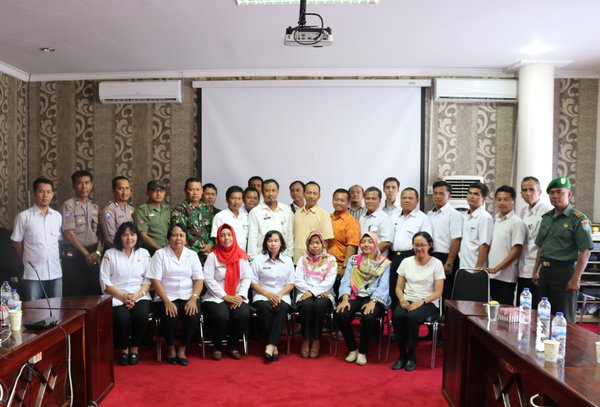Generating Anticipatory Measures for Better Utilization of Tropical Peat Lands (GAMBUT) FRS Tagging and Mainstreaming Training

Since 2016, CCROM SEAP in close collaboration with Columbia University’s Earth Institute, with support from UNOPS, UNEP and funding from the U.S. Agency for International Development (USAID) developed the FRS (Fire Risk System) under the core project of the Generating Anticipatory Measures for Better Utilization of Tropical Peat lands (GAMBUT) in responds to the long-term dramatic development in fire vulnerability in Indonesia's peat lands. The Fire Risk System (FRS), is a computer based risk modelling tool with spatial outputs that helps fire managers to identify the potential for future fire occurrence across land and forest areas. The GAMBUT project seeks to mainstream anticipatory forest and peat land fire risk management into development planning processes of high-risk areas in Indonesia, resulting in a reduction of hotspot incidences and consequently, reduced haze impacts and GHG emissions from the land-use sector.
By combining historical hotspot, biophysical, socio economic and institutional factors, as well as an analysis of historical and predicted rainfall or sea surface temperatures (ENSO), the FRS provides probabilistic forecast to policymakers of the likelihood of fire 1-3 months in advance. With early anticipation of fire hotspots, governments will be able to tailor preventative actions to the appropriate level of fire risk for a specific location in Indonesia. Such actions must be location specific and targeted to the specific dynamics of a village, district or province. Ultimately, this early warning system will be a powerful tool for policymakers at all levels of Indonesian government to not only reduce the incidence of forest and peat land fires but systemically mitigate the vulnerability of areas to fires.
In line with the above, CCROM-IPB and UNOPS organized three (3) days training from 1st – 3rd August 2016 in Santika Hotel Bogor, with main target participants were both from the project and operational unit District Officers from Bengkalis, Rokan Hilir, Siak, Dumai, Kapuas, Pulang Pisau, Barito Selatan and Palangka Raya; Provincial Officers from Central Kalimantan and Riau; SIAGA project officer; Research Coordinator; Operations officer; and GAMBUT CTA. In this training, CCROM team took a part as the main resource person for three (3) days training.
This training was aimed on how best to mainstream the FRS into local development planning. By the end of the training, all GAMBUT field team members were expected to get thorough understanding of (i) the project’s next steps to mainstream the FRS into the provincial and district level development processes (ii) action plan and next steps identified to ensure government support and buy into the process of mainstreaming the FRS into local development plans.

 The vision of Bogor Agricultural University (IPB) is to become a leading research-based university in the world with the
major competence in tropical agriculture,
biosciences, and possessing entrepreneurial characteristics
The vision of Bogor Agricultural University (IPB) is to become a leading research-based university in the world with the
major competence in tropical agriculture,
biosciences, and possessing entrepreneurial characteristics